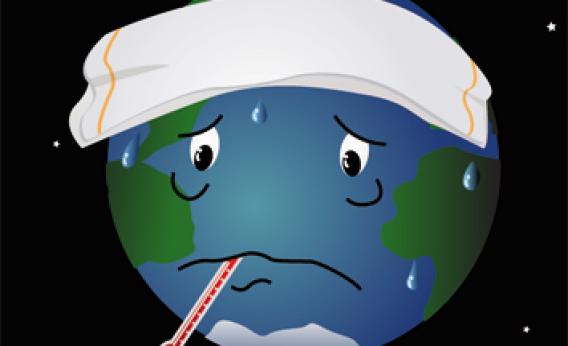Create a free profile to get unlimited access to exclusive videos, sweepstakes, and more!
Old Arctic Ice Is Disappearing and Taking the Rest of the Ice With It

The National Oceanic and Atmospheric Administration recently released a video that shows compellingly just how bad things are getting at the top of the world. The animation displays Arctic ice over time not just by how much area it covers, but also by age, with white being the oldest ice (nine years or older):
It’s not hard to see that over the past few years, the oldest ice has melted away, and over time the ice gets younger. That’s not good: Older ice is thicker and tends to hang around longer; young ice is generally thinner and melts away every summer. That means that the year-round amount of ice is dropping, and dropping rapidly. As the Arctic warms, its ability not just to form ice but to keep it wanes.
It’s not just area, either, it’s volume. Yes, the ice is covering less area of the sea, but it’s also thinning. That means it will melt even faster in the summer. This is very bad, because as far as we can tell this is a runaway process. Ice is white and reflective, while the water under it is darker. When the ice goes away it exposes the darker water which absorbs sunlight more efficiently, raising the temperature further. That’s one of the reasons we’re seeing the ice dwindling in the Arctic with alarming rapidity.
This is fact, pure and simple. Yet I still see some global warming deniers claiming the Arctic ice has “rebounded” from its low in 2012. That is 100 percent pure grade-A fertilizer (and I’d use far stronger words if I didn’t want to keep this blog at least semi-family-friendly). There were several reasons the ice hit a record low in 2012—including an overall thinning for years that made it prone to break up in big weather events. There was just such a storm in August 2012. But that thinning is due to increasing temperatures in the Arctic, and that’s due to global warming.
This video shows how bad it is:
As you can see, the little bump there in 2013 doesn’t go very far in mitigating the huge and stunning drop in Arctic sea ice we’ve been seeing for many years now. “Recovery,” my ice. That’s denier smoke-and-mirrors, an attempt to distract people from what’s really going on (just like the completely false claim that Antarctic ice growth compensates for Arctic loss). Ironically, even the major oil companies are admitting Arctic ice is going away. In some ways, they’re counting on it, since it makes drilling for oil up there easier.
Incidentally, Arctic ice is right now at a record low for this time of year. It's far too early to be predicting how low it will get during the spring and summer thaw—the current amount is not lower than the previous February minimum by a statistically significant amount—but it's definitely worth keeping our eyes on it. The warmer-than-usual temperatures up north are certainly to blame for this.
We don’t know how long it will be before we see our first ice-free Arctic summer, but it may be as soon as 30 years. Most likely it will be somewhat longer; I hope so. But the bottom line is that the ice is going away due to global warming, and as it does we’ll see worse and worse effects from it. The time to stick our heads in the sand about this is long, long gone.


























